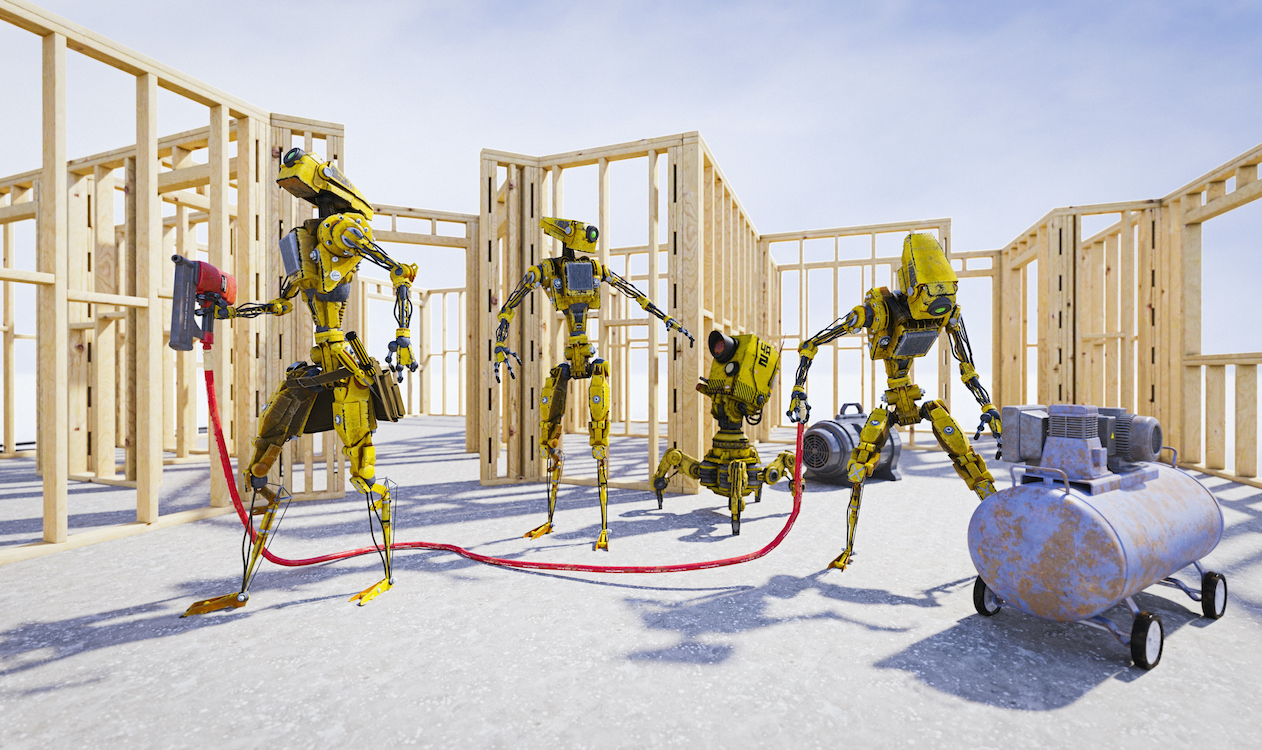The construction industry stands at a pivotal juncture, where traditional methods face a wave of technological innovation that promises to revolutionize how projects are managed and executed. Despite its substantial contribution to global GDP and high levels of spending, the sector has historically been resistant to change. However, recent trends suggest an awakening, driven by labor shortages, increased demand for efficiency, and a growing readiness to integrate advanced technologies. In this blog post, we’ll explore the latest developments in construction tech, shedding light on the opportunities and challenges that lie ahead.
The Reluctance to Change
Historically, industries with significant disruption potential often exhibit a reluctance to integrate cutting-edge technologies. This is evident within the construction sector, characterized by low profit margins and project-based operations. For many project managers, the risk of implementing untested technologies in real-world scenarios is daunting. Heinrich Grller, a partner at Speedinvest, aptly highlighted this inhibitive structure: “It is difficult to find a project manager who is willing to take the risk to implement bleeding-edge tech on their project.” The reluctance resonates across the industry, from site workers hesitant to adopt new tools to executives grappling with the operational shifts required for tech uptake.
Labor Shortages: A Catalyst for Change
One clear impetus for embracing technology has been the acute labor shortages exacerbated by the Great Resignation. As articulated by Sungjoon Cho from D20 Capital, this shortage affects both blue-collar and white-collar sectors of construction. Companies are not only losing skilled labor on-site but also experienced professionals in management and planning. This environment creates a pressing need for solutions that enhance operational efficiency, improve safety, and streamline workflow management to counterbalance the dwindling workforce.
Investment Opportunities: The Time is Now
Despite these challenges, investors have turned their gaze towards construction tech startups offering promising solutions in areas like robotics, data management, and augmented reality. The outlook is bolstered by the U.S. construction industry reaching unprecedented spending levels, totaling $1.57 trillion in the previous year. Investors are especially interested in commercial projects, where the potential for innovative technologies to drive significant ROI is compelling.
- Data Management and Automation: With a fragmented marketplace, startups that can seamlessly manage data flow and deliver actionable insights are poised for success.
- Robotics: Companies such as Versatile are integrating advanced robotics to automate labor-intensive tasks, improving safety and efficiency.
- Augmented Reality: This technology can dramatically enhance project visualization, enabling stakeholders to engage with plans and workflows dynamically.
Government Initiatives: A Silver Lining
The recent $1.2 trillion Infrastructure Investment and Jobs Act from the U.S. government is another catalyst for change. Although only allocating $100 million for digital construction technologies, the potential for utilizing advanced tech in public infrastructure projects sets a precedent that could inspire further investment and adoption across the industry.
Breaking Down Barriers to Adoption
Addressing the underlying hesitance to embrace technology hinges on fostering a seamless integration of tools into existing workflows. Construction teams prioritize project execution, thereby necessitating solutions that demonstrate immediate value and tangible ROI. Startups must prioritize user-friendly interfaces and intuitive design while ensuring their tools can easily coexist with conventional methods.
A Bright Future for Construction Tech
The confluence of recent labor challenges and government support presents an ideal environment for disruptive innovations in construction tech. From the integration of building information modeling (BIM) to fostering partnerships between startups and established firms, the next few years could usher in a transformative phase for the industry. The convergence of technology and construction is not just evolutionit’s a revolution waiting to unfold.
Conclusion
While the construction industry has been slow to adopt cutting-edge technologies, recent trends signal a willingness to embrace change driven by external pressures. The labor shortage combined with government initiatives and investment opportunities provides an encouraging backdrop for startups. As construction firms increasingly recognize the necessity of integrating technology to improve efficiency, safety, and sustainability, now is a critical time for innovators to step forward.
At fxis.ai, we believe that such advancements are crucial for the future of AI, as they enable more comprehensive and effective solutions. Our team is continually exploring new methodologies to push the envelope in artificial intelligence, ensuring that our clients benefit from the latest technological innovations.
For more insights, updates, or to collaborate on AI development projects, stay connected with fxis.ai.

